800 - 700 avant l’ère commune.
Le prophète Isaïe et la confrontation avec les Assyriens
Après environ 50 ans d'attaques par les Assyriens au 9ème siècle avant notre ère, il s'ensuivit une période de paix de 50 ans. Au cours de cette période, Jonas se rendit à Ninive et Jéroboam II devint roi d'Israël. Puis, en 745 avant l’ère commune, avec l'accession au trône de Tiglath-Phalazar, les Assyriens commencèrent à réaffirmer leur domination militaire. Isaïe commença sa prophétie à un moment où Israël était à nouveau confronté à la menace d'attaques et de conquêtes assyriennes.
Relief de Lakish, British Museum, Londres
Photo prise par Ardon Bar-Hama
Le roi Joas d'Israël, règne
800-784 avant l’ère commune.
Rois II 13 :10
« Joas, fils de Joachaz, régna sur Israël en Samarie... »
Stèle de Tell al-Rimah d'Adad-Nirari III, roi d'Assyrie, 797 avant l’ère commune.
« J'ai reçu un tribut de Joas le Samarien. »
Le roi Jéhu fut remplacé par son fils Joachaz, sous le règne duquel le royaume du nord d'Israël subit des défaites écrasantes que lui imposa le roi Hazaël d'Aram. Joas, fils de Joachaz, délivra le royaume du Nord de l'oppression autoritaire d'Aram.
Rois II 13 :10
« Joas, fils de Joachaz, régna sur Israël en Samarie...
La stèle de Tell al-Rimah, datant d'environ 797 avant l’ère commune, trouvée dans le nord de l'Irak, raconte comment le souverain assyrien Adad-Nirari III soumit les terres d'Amurru (Aram) et de Hatti et comment il leva des taxes et des tributs. Parmi les rois qui payaient tribut, on trouve le roi d'Israël Joas :
« J'ai (Adad-Nirari) reçu un tribut de Joas le Samarien. »
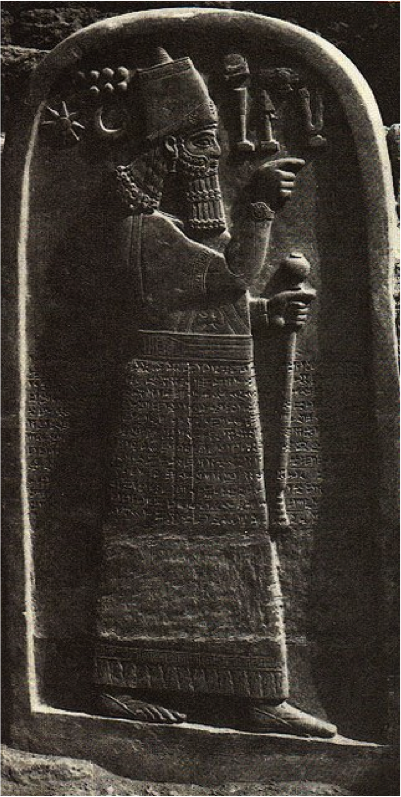
Musée d'Irak, Bagdad
Le prophète Jonas, vers 760 avant l’ère commune
Jonas 1 :1-2
« La parole de l'Éternel fut adressée à Jonas, fils d'Amittaï en ces termes : Lève-toi, va à Ninive, la grande ville, et proclame son jugement contre elle ; car leur iniquité est arrivée jusqu’à Moi. »
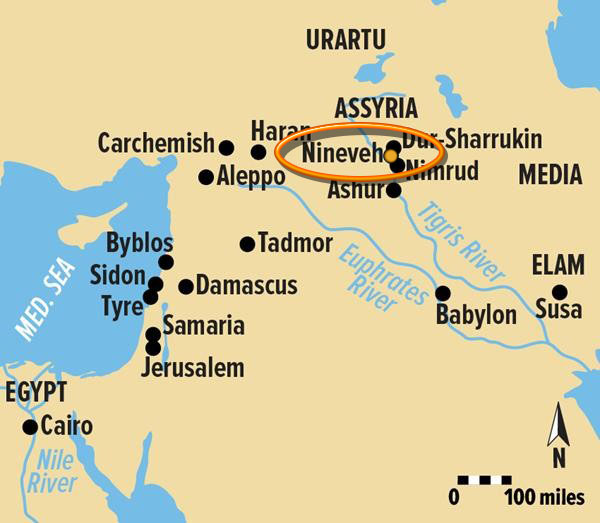
La ville assyrienne de Ninive est située dans la zone kurde du nord de l'Irak, dans la ville de Mossoul, à 322 kilomètres au nord de Bagdad.
La Bible raconte l'histoire du prophète Jonas (vers 760 avant l’ère commune),
qui reçut une prophétie de Dieu concernant la destruction de Ninive, si le roi et la ville refusaient de se repentir.
Jonas 1 :1-2
La parole de l'Éternel fut adressée à Jonas, fils d'Amittaï en ces termes :
Lève-toi, va à Ninive, la grande ville et proclame son jugement contre elle ; car leur iniquité est arrivée jusqu’à Moi.
Tentant d'échapper à la mission de Dieu, Jonas monte à bord d'un navire pour Tarsis. Dieu déclanche une puissante tempête qui faillit détruire le navire. Jonas avoue aux matelots qu'il leur a apporté ce malheur, et que s'ils le jettent par-dessus bord, la mer se calmera.
« Et ils jetèrent Jonas par-dessus bord, et la mer cessa de se déchaîner. » (Jonas 1 :15).
Là, un gros poisson avala Jonas et après son repentir, le poisson le recracha sur le rivage. Jonas livra la prophétie au roi de Ninive et la ville se repentit.
La ville assyrienne de Ninive est située dans le nord de l'Irak moderne, dans la ville kurde de Mossoul.
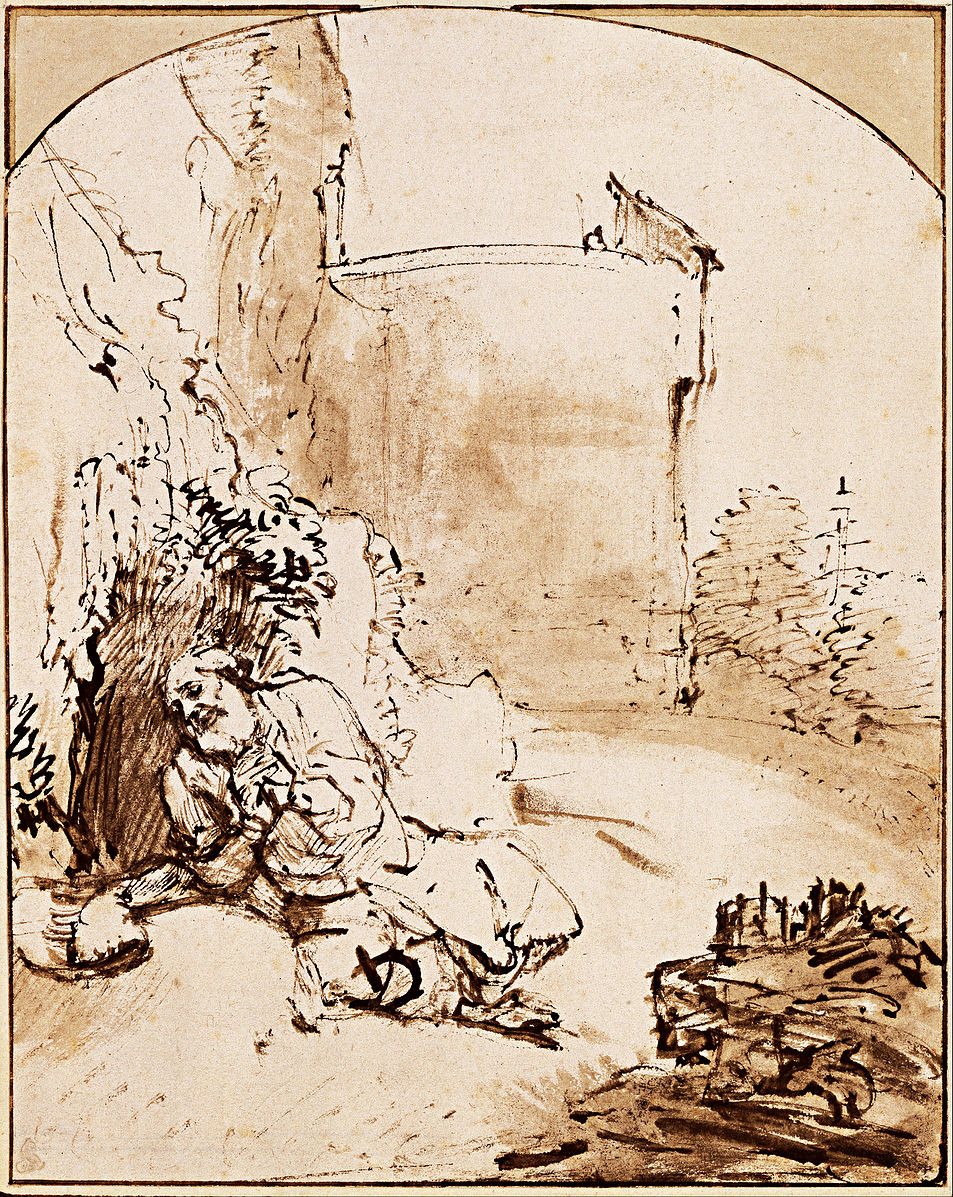
Le prophète Jonas devant les murs de Ninive par Rembrandt
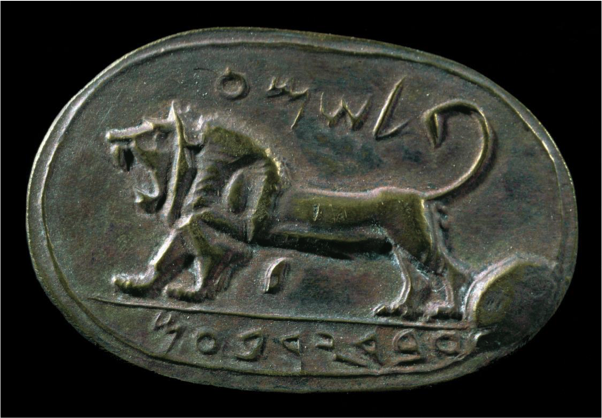
Moulage en bronze du sceau original en jaspe, trouvé à Megiddo en 1904, Musée d'Israël
Roi Jéroboam II d'Israël, règne : 786-746 avant l’ère commune
Rois II 14 :23
« La quinzième année du règne du roi Amasias, fils de Joas de Juda, le roi Jéroboam (II), fils de Joas d'Israël, devint roi de Samarie, pour quarante et un ans. »
Sceau de Shema
« Appartenant à Shema, Serviteur de Jéroboam (II) »
L’image représente l'impression d'un sceau montrant la figure d'un lion rugissant portant l'inscription hébraïque : לשמע - עבד ירובם signifiant « Appartenant à Shema, serviteur de Jéroboam ». Elle fait référence à Jéroboam II, roi d'Israël qui régna de 786 à 746 avant l’ère commune.
Rois II 14 :23
« La quinzième année du règne du roi Amasias, fils de Joas de Juda, le roi Jéroboam (II), fils de Joas d'Israël, devint roi de Samarie pour quarante et un ans. »
Le sceau original en jaspe a été trouvé lors des fouilles de 1904 à Megiddo. Le sceau lui-même a été perdu en route vers le musée d'Istanbul, mais heureusement, cette empreinte coulée en bronze avait été faite avant son embarquement.

Portrait d'Isaïe par Michel-Ange,
Chapelle Sixtine
Isaïe commence sa prophétie, vers 745 avant l’ère commune
Isaïe 1 :1
Vision d'Isaïe, fils d'Amos, qui prophétisa au sujet de Juda et de Jérusalem sous les règnes d'Ozias, de Jotham, d’Achaz et d’Ézéchias, rois de Juda.
Isaïe commença sa prophétie vers 745 avant l’ère commune.
Le prophète Isaïe, l'un des prophètes les plus connus et les plus aimés, commence sa prophétie au moment où les Assyriens réaffirment leur pouvoir d'intimidation sur la carte géopolitique. Il ne se contente pas de mettre en garde contre la destruction et l'exil, si Juda et Israël continuent à tomber dans l’idolâtrie, mais il est surtout connu pour son message d'encouragement à la droiture et à la justice, et pour ses prophéties de consolation et d'espoir, parlant d'un temps, dans un avenir lointain, où la nation d'Israël retournera à nouveau à ses frontières.
Sa prophétie couvre la période d'agression assyrienne par les rois Tiglath-Phalazar III, Sargon II et Sennachérib.
Les attaques assyriennes aboutissent finalement à la destruction des dix tribus du nord d'Israël ainsi qu'au siège de Jérusalem.

Manuscrits numériques de la mer Morte, Musée d'Israël et photo de Google par Ardon Bar-Hama, avec l'aimable autorisation de George Blumenthal
Isaïe commence sa prophétie alors que Tiglath- Phalazar III, également connu sous le nom de roi Pul d'Assyrie, fait la guerre à Israël et à Juda, en 745 avant l’ère commune.
Isaïe 1 :1
Vision d'Ésaïe, fils d'Amos, qui prophétisa au sujet de Juda et de Jérusalem, sous les règnes d'Ozias, de Jotham, d'Achaz et d'Ézéchias, rois de Juda.
Cliquez sur le lien pour voir le Grand Rouleau d'Isaïe, l'un des sept manuscrits originaux de la mer Morte découverts à Qumrân en 1947 par un jeune berger, et achetés par le gouvernement israélien en novembre de la même année, ce même mois où les Nations Unies votèrent en faveur de la création de l'État d'Israël. C'est le plus grand et le mieux conservé de tous les rouleaux bibliques et le seul qui soit presque complet.
Vous pouvez également faire défiler et zoomer virtuellement sur la version numérisée ultra-haute résolution du Grand Rouleau d'Isaïe photographié par Ardon Bar-Hama pour le Musée d'Israël, avec l'aimable autorisation de George Blumenthal et de Google.
Le grand rouleau d'Isaïe
Isaïe commence sa prophétie alors que Tiglath-Phalazar III (Pul) d'Assyrie fait la guerre à Israël et à Juda, en 745 avant l’ère commune.
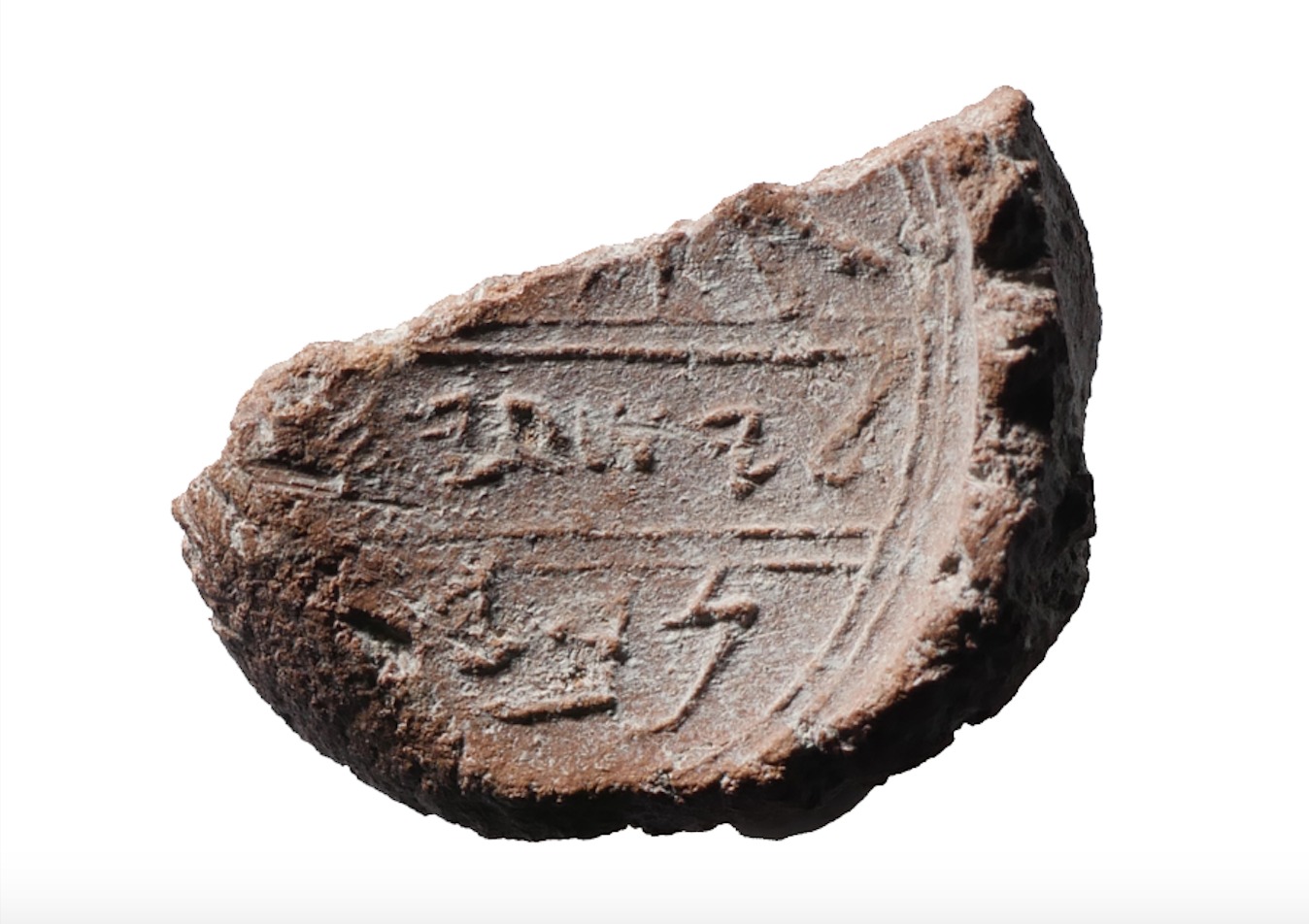
Sample text. Click to select the Text Element.
Sample Headline
Sample text. Click to select the Text Element.
Sample text. Click to select the Text Element.
« Appartenant à Amos »
Isaïe 2 :1-2
Vision d’Isaïe, fils d'Amos, vit au sujet de Juda et de Jérusalem. Et il arrivera, à la fin des temps, que la montagne de la maison de l’Éternel sera affermie sur la cîme des montagnes et s'élèvera au-dessus des collines et toutes les nations y afflueront.
Ce tesson du VIIIième avant l’ère commune siècle provenant d'une jarre porte l'inscription « Appartenant à Amos », le nom même du père d'Isaïe.
Ce tesson du 8ème siècle avant notre ère provenant d'une jarre porte l'inscription « Appartenant à Amotz », le même nom que le père d'Isaïe.
L'inscription a été trouvée en 1966 au cours de la première année des fouilles à Tel Dan en Galilée du Nord.
Isaïe 2 :1-2
Vision d'Isaïe, fils d'Amos, au sujet de Juda et de Jérusalem. Et il arrivera, à la fin des temps, que la montagne de la maison de l‘Éternel sera affermie sur la cîme des montagnes et s'élèvera au-dessus des collines et toutes les nations y afflueront.
Avraham Biran et Hebrew Union College - Jewish Institute of Religion
Ozias de Juda, roi de Juda, règne 783-742 avant l’ère commune
Chroniques II 26 :3
Ozias avait seize ans lorsqu'il devint roi, et il régna cinquante-deux ans à Jérusalem.
Épitaphe du roi Ozias
« Les ossements d’Ozias, roi de Juda »
Le premier règne mentionné par Isaïe est celui du roi Ozias. Le roi Ozias de Juda régna au milieu du VIIIe siècle avant l’ère commune. Cependant, l'épitaphe inscrite ici date d'une période beaucoup plus tardive, ce qui indique que cette plaque a été utilisée pour marquer la ré-inhumation de ses restes. La Bible note que le roi Ozias était lépreux jusqu'à sa mort, il a donc peut-être été enterré à l'origine dans un endroit spécial en raison de la stigmatisation de l'impureté associée à la maladie.
L'épitaphe du roi Ozias se lit comme suit :
« C'est là qu'on apporta les ossements d'Ozias, roi de Juda : ne les ouvrez pas ! »
Chroniques II 26 :3
Ozias avait seize ans lorsqu'il devint roi, et il régna cinquante-deux ans à Jérusalem.
Musée d'Israël, Jérusalem / Autorité des Antiquités d'Israël. Photo de Meidad Suchowolski
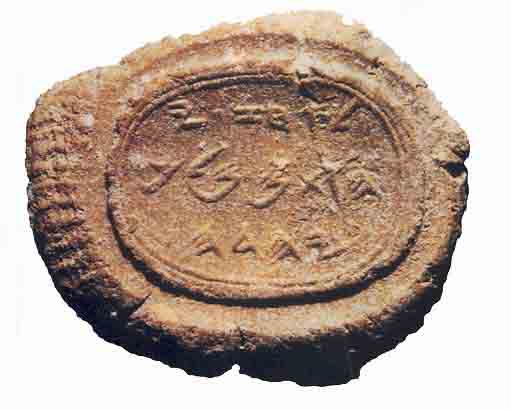
Collection Shlomo Moussaieff, Londres
Achaz, roi de Juda, règne de 732 à 716 avant l’ère commune
Isaïe 1 :1
Vision d'Isaïe, fils d'Amos, qui prophétisa au sujet de Juda et de Jérusalem sous les règnes d'Ozias, de Jotham, d’Achaz et d‘Ézéchias, rois de Juda.
Inscription du palais de Tiglath-Phalazar III
« [J'ai reçu] l'hommage de... (Jeho) Achaz de Juda... »
Impression du sceau du roi Achaz
« Appartenant à Achaz (fils de) Jotham, roi de Juda »,
Un autre roi mentionné par Isaïe est le roi Achaz de Juda, qui régna de 732 à 716 avant l’ère commune.
Chroniques II 28 :1 dit :
« Achaz avait vingt ans lorsqu'il devint roi, et il régna seize ans à Jérusalem. Il ne fit pas ce qui plaisait à l'Éternel comme l'avait fait son père David. »
Cette bulle d'argile, trouvée en 1995, contient une inscription hébraïque qui se lit comme suit : « Appartenant à Achaz (fils de) Jotham, roi de Juda ».
King Hezekiah of Judah,
r. 715-687 BCE
Isaiah 1:1
The prophecies of Isaiah son of Amoz, who prophesied concerning Judah and Jerusalem in the reigns of Uzziah, Jotham, Ahaz, and Hezekiah, kings of Judah.
Hezekiah Seal Impression
Found in 2015 by Eilat Mazar and the Ophel Excavations at the Southern Wall of the Temple Mount.
“Belonging to Hezekiah, (son of) Ahaz, King of Judah.”
Le dernier roi mentionné dans le verset d'ouverture d'Isaïe est le roi Ézéchias de Juda, qui régna de 715 à 687 avant l’ère commune.
Rois II 18 :1 rapporte,
« La troisième année du règne du roi Osée, fils d'Éla d'Israël, Ézéchias, fils du roi Achaz de Juda, devint roi.
Le Livre des Rois poursuit en disant qu'Ézéchias
« fit ce qui plaisait à l’Eternel, tout comme son père David l'avait fait. »
En 2015, cette empreinte de sceau d'Ézéchias a été trouvée au mur sud du mont du Temple. On peut y lire :
« Appartenant à Ézéchias, fils d'Achaz, roi de Juda. »
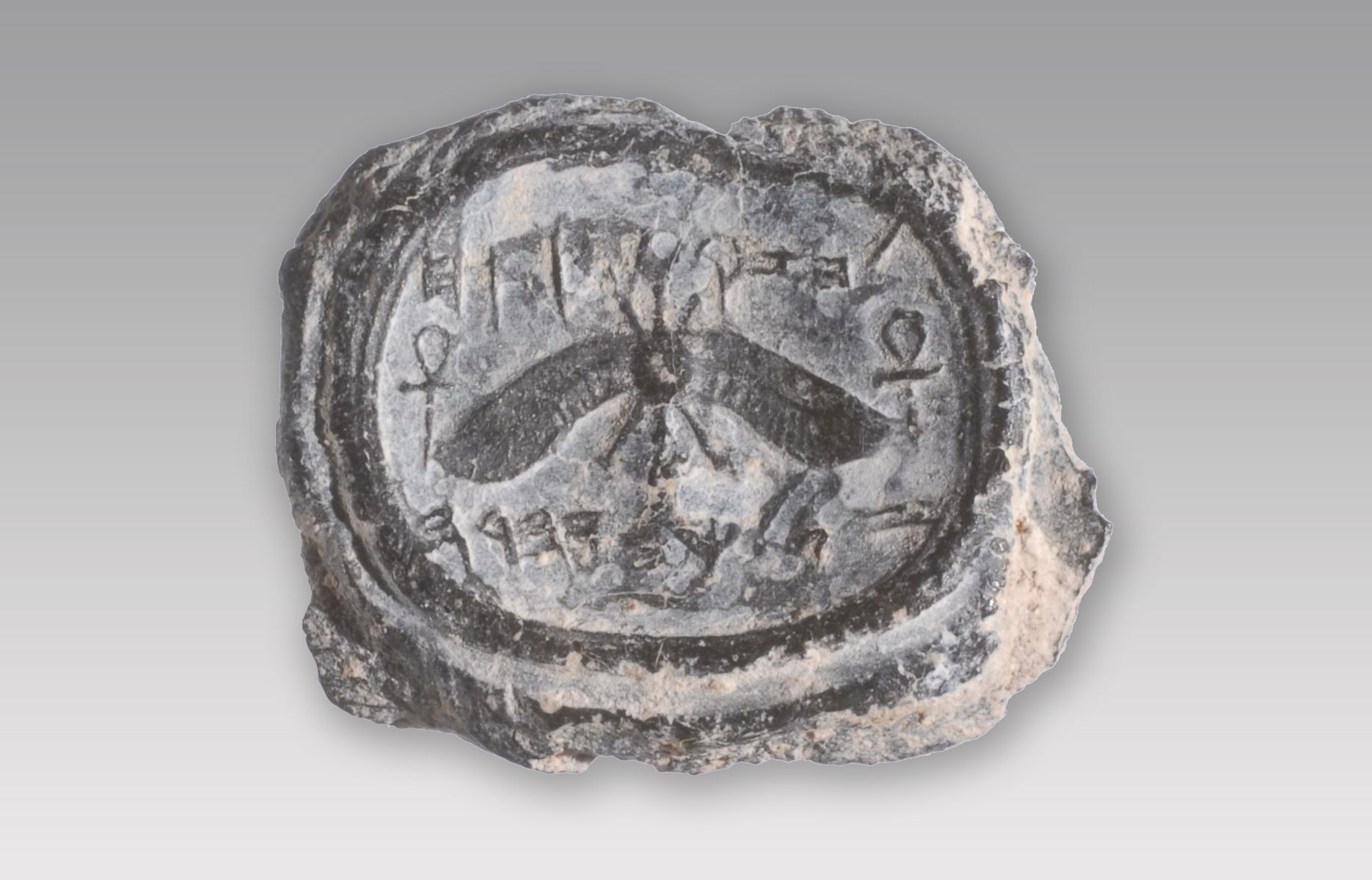
Israel Antiquities Authority / Israel Museum, Photo by Peter Lanyi
The Prophet Isaiah and the Assyrian Kings
Le royaume du nord d'Israël, composé des 10 tribus du nord, fut conquis et ses habitants systématiquement exilés au cours de cette période par quatre monarques assyriens : Tiglath-Phalazar III, Salmanazar V, Sargon II et enfin Sennachérib.
Le prophète Isaïe prédit et annonça la destruction par les rois assyriens.
Ésaïe 10 :5-6
Malheur à l‘Assyrie, verge de ma colère, dans la main de qui, comme un bâton, est Ma fureur ! Je l'envoie contre une nation impie, je l'accuse contre un peuple qui me provoque, de prendre son butin, de s'emparer de son butin et d'en faire une chose foulée aux pieds comme la boue des rues.
The Digital Dead Sea Scrolls, Israel Museum and Google Photography by Ardon Bar-Hama, Courtesy of George Blumenthal

King Menahem of Israel,
r. 745-738 BCE, and
Tiglath-Pileser III (Pul), King
of Assyria, r. 745-727 BCE
2 Kings 15:19-20
Menahem gave Pul a thousand talents of silver... every man of means had to pay fifty shekels of silver for the king of Assyria.
Iran Stele, 738 BCE
“ I (Tiglath-pileser III) received tribute from . . . Menahem of Samaria.”
Tiglath-Phalazar III fut l'architecte de la plus vaste expansion de l'Empire néo-assyrien vers l'ouest. Ses troupes se dirigent vers la mer Méditerranée, affrontant Israël et des villes du Liban et de Juda. Il consigna ses campagnes militaires et ses conquêtes sur la stèle iranienne, photographiée ici, vers 738 avant l’ère commune.
L'une des sections de l'inscription consigne une liste de rois ayant payé un tribut à Tiglath- Phalazar III, dont « Menahem de Samarie ». L'inscription se lit comme suit :
« J'ai (Tiglath- Phalazar) reçu l'hommage de [...] Menahem de Samarie.
« Samarie » fait référence à la capitale du Royaume du Nord d'Israël.
Cela corrobore le récit biblique qui relate que le roi israélite Menahem paya un grand tribut à Tiglath- Phalazar, connu sous le nom de « Pul » dans la Bible.
Rois II 15 :19-20
Menahem donna à Pul mille talents d'argent... tout homme riche devait payer cinquante sicles d'argent au roi d'Assyrie.
Israel Museum, Jerusalem, Photo by Ardon Bar-Hama
The Tribe of Naphtali and Tiglath-Pileser III (Pul)
2 Kings 15:29
In the days of King Pekah of Israel (c. 740-732 BC), King Tiglath-pileser of Assyria came and captured…Hazor and Gilead and Galilee, all the land of Naphtali; and he deported the inhabitants to Assyria.
The Annals of Tiglath-Pileser III
“…Israel (Bit Hu-um-ri-a, "House of Omri") and the wide land of Naphtali, in its entire extent, I united with Assyria."
En 1873, l'explorateur britannique Sir Austen Henry Layard découvrit le palais de Tiglath-Phalazar à Nimroud (l'ancienne Kalhu) près de la ville de Mossoul dans le nord-est de l'Irak. Il découvrit de multiples inscriptions qui étaient des déclarations sommaires des réalisations de Tiglath Phalazar III. L'une d’elles mentionne la maison israélite d'Omri et le pays de la tribu de Nephtali.
L'un des articles se lit comme suit :
"... Israël (Bit Hu-um-ri-a, ou la « Maison d'Omri ») et le vaste pays de Nephtali, dans toute son étendue, que j’ai uni à l'Assyrie.
Cela correspond directement au récit biblique :
Rois II 15 :29
À l'époque du roi Pékah d'Israël, le roi Tiglath-Phalazar d'Assyrie vint et captura... Hatsor, Galaad et la Galilée, tout le pays de Nephtali ; et il déporta les habitants en Assyrie.
Wikimedia Commons
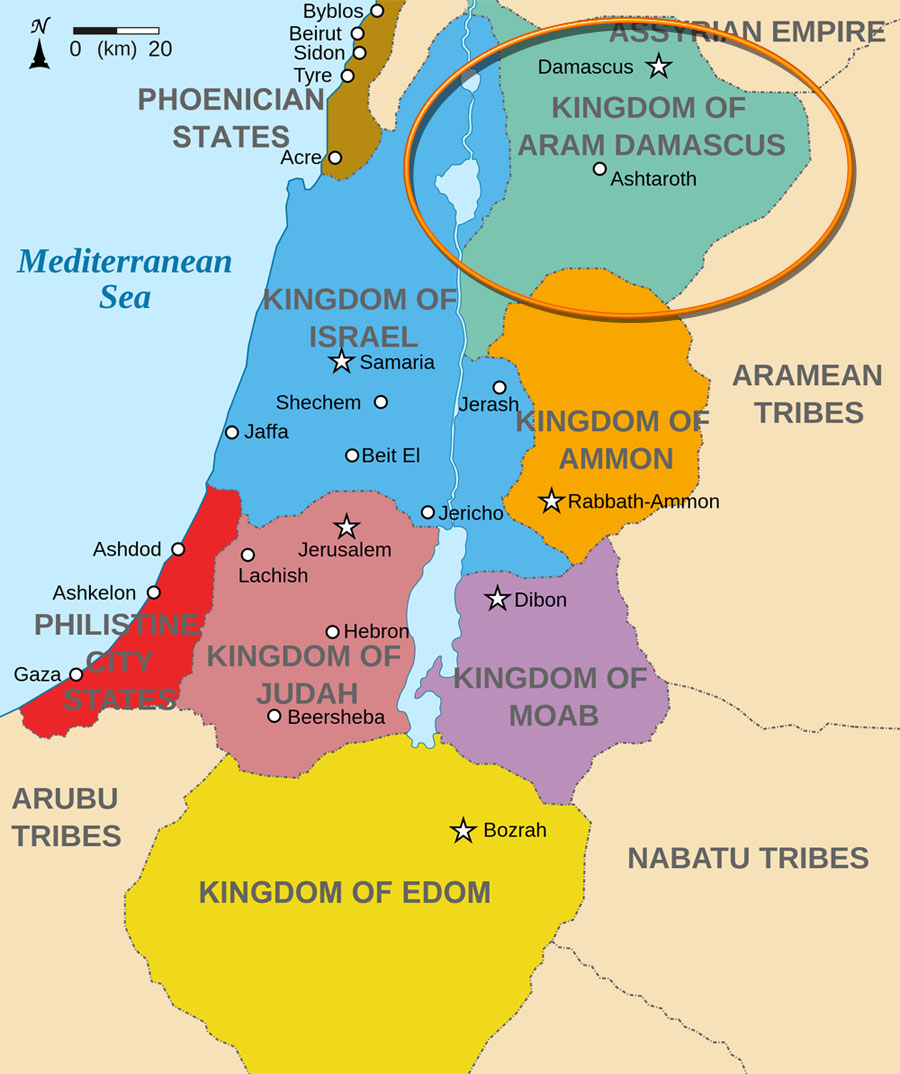
Tiglath-Pileser III (Pul) Defeats King Rezin of Damascus,
732 BCE
Isaiah 8:4-6
...the riches of Damascus and the spoil of Samaria shall be carried away before the king of Assyria. And the L-RD spoke unto me yet again, saying: Forasmuch as this people refused the waters of Shiloah that go softly, and rejoice with Rezin and Remaliah's son;
The Calah Annals of Tiglath-Pileser III
“…Rezin the Damascene I captured heavy booty I impaled alive his chief ministers…”
Après de nombreuses années où ils avaient payé de lourdes taxes, Israël et Juda ainsi que Damas (dans la Syrie moderne) se sont ouvertement rebellés contre les Assyriens en refusant de payer. Les Assyriens, sous le commandement de Tiglath Phalazar III, assiégèrent Damas et tuèrent son roi, Rezin.
Les Annales de Kalhu de Tiglath-Phalazar III qui ont été trouvées à Nimroud en donnent un autre compte rendu :
« ... J'ai capturé Rezin le Damascène,,, lourd butin, j'ai empalé vifs ses principaux ministres… »
Cela corrobore le livre d'Isaïe 8:4-6
...on emportera devant le roi d'Assyrie les richesses de Damas et le butin de Samarie. L'Eternel me parla encore, et me dit: Parce que ce peuple a méprisé les eaux de Siloé qui coulent doucement Et qu'il s'est réjoui au sujet de Retsin et du fils de Remalia,…
Wikimedia Commons
Relief from the palace of Tiglath-Pileser III (Pul)
A panel from the palace of Tiglath-pileser III depicts Israelite captives from Astartu, as identified in the inscription, which was a fortified town in northern Galilee (East of the Sea of Galilee).
In this photo by Ardon Bar-Hama is a section of the relief from the palace of Tiglath-pileser III at Nimrud, currently on display in the British Museum, depicting Israelite captives from Astartu, as identified in the inscription, which was a fortified town in northern Galilee.
The British Museum, London, Photo by Ardon Bar-Hama
King Hoshea of Israel,
r. 732-723 BCE
2 Kings 17:1
In the twelfth year of Ahaz king of Judah, Hoshea the son of Elah became king over Israel in Samaria, and reigned nine years.
The Calah Annals of Tiglath-Pile ser III
"They [the Israelites] overthrew their king Pekah and I placed Hoshea as king over them."
Seal of Abdi
“Belonging to Abdi, servant of Hoshea”
2 Kings 17:1 In the
twelfth year of Ahaz king of Judah, Hoshea the son of Elah became king over
Israel in Samaria and reigned nine years.
King Hoshea of Israel, ruled from 732-723 BCE
and was the last King of the Northern kingdom.
The Bible records:
“King Shalmaneser (the fifth) of Assyria
marched against him, and Hoshea became his vassal and paid him tribute.” 2 Kings 17:3
In this picture is the Seal of Abdi, a servant
of King Hoshea. The seal reads: “Belonging to Abdi, servant of Hoshea”
Shlomo Mousaieff Collection, London

The British Museum, London
Sargon II, King of Assyria, Captures Samaria, 720 BCE
2 Kings 17:6
In the ninth year of Hoshea, the king of Assyria captured Samaria. He deported the Israelites to Assyria.
Nimrud Prism, Annals of Sargon II
“I besieged and conquered Samaria, led away as booty 27,290 inhabitants of it.”
In 720, Sargon II, King of Assyria (r. 722-705 BCE), led an attack on Samaria, the region of the 10 Northern Tribes of Israel. He took many Israelites to Nimrud (Iraq) as slaves, while other Israelites fled to Jerusalem.
In 720 BCE, Sargon II, King of Assyria that
ruled from 722-705 BCE, captured Samaria, the region of the 10 Northern Tribes
of Israel. He took many Israelites to Nimrud (Iraq) as slaves, while other
Israelite refugees fled to Jerusalem.
He
recorded this conquest in his annals on the Nimrud Prism, which reads:
“I
besieged and conquered Samaria, led away as booty 27,290 inhabitants of it.”
The Bible confirms this account in 2 Kings
17:6:
In the
ninth year of Hoshea, the king of Assyria captured Samaria. He deported the
Israelites to Assyria.
Captured Israelites Are Taken to Nimrud, The Capital City of Sargon II of Assyria, 720 BCE
An 8th Century BCE ostracon found at Nimrud contains Biblical Hebrew names written in Aramaic. In conventional English, these names are: Michael, Menahem, Elisha, Hanan, Shubael, Uzziah, Hazael, Haggai, Achbor and Hananeel.
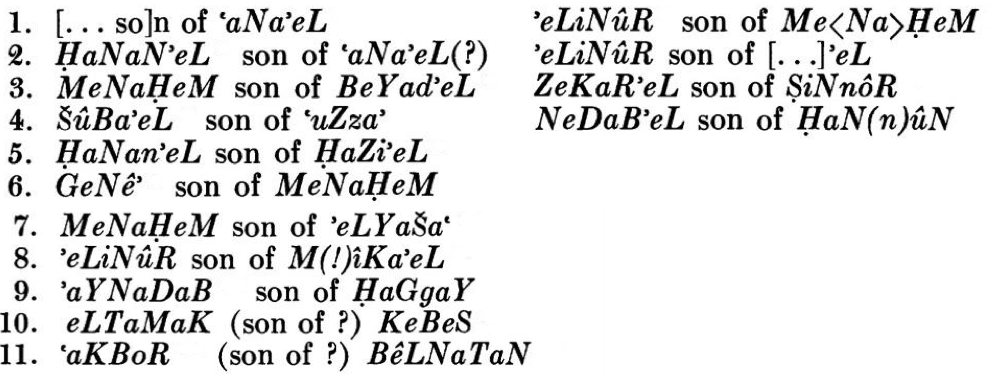
The captured Israelites were taken to Nimrud,
the Capital City of Sargon of Assyria circa 720 BCE
An 8th Century BCE ostracon found at Nimrud contains
Biblical Hebrew names written in Aramaic.
In conventional English, these names are: Michael, Menahem, Elisha,
Hanan, Shubael, Uzziah, Hazael, Haggai,
Achbor and Hananeel.
W. F. Albright
Temple at Arad,
8th Century BCE
2 Kings 18:3-4
He (Hezekiah) did what was pleasing to the L-RD, just as his father David had done. He abolished the shrines and smashed the pillars and cut down the sacred post…
A small sanctuary was uncovered in the Arad fortress on Judah’s southern border. It is the only Judahite temple ever discovered. The sanctuary was intentionally buried in the time of King Hezekiah, who sought to abolish all public worship outside the Temple in Jerusalem.
Hezekiah became king of Judah in 715 BCE. He instituted a number of religious
reforms.
2 Kings 18:3-4 records
He
(Hezekiah) did what was pleasing to the L-RD, just as his father David had
done. He abolished the shrines and smashed the pillars and cut down the sacred
post…
Supporting this biblical account, a small
sanctuary dating back to the 8th Century BCE was uncovered in the Arad fortress
on Judah’s southern border. It is the only Judahite temple ever
discovered. The sanctuary was
intentionally buried in the time of King Hezekiah, who sought to abolish all
public worship outside the Temple in Jerusalem.
Israel Museum / Israel Antiquities Authority
Sennacherib, King of Assyria,
r. 705–681 BCE, Invades Judah
2 Chronicles 32:1
Sennacherib king of Assyria came and invaded Judah. He laid siege to the fortified cities, intending to conquer them for himself.
After the systematic exile of the Northern
Tribes by his predecessors, Sennacherib, King of Assyria invaded Judah.
Sennacherib ruled from 705 to 681 BCE.
2 Chronicles 32:1 Sennacherib
king of Assyria came and invaded Judah. He laid siege to the fortified cities,
intending to conquer them for himself.

The Route of Sennacherib’s Campaigns
Biblical Archaeology Society
King Hezekiah Prepares to Battle the Sennacherib,
701 BCE
2 Chronicles 32:2-4
When Hezekiah saw that Sennacherib had come, intent on making war against Jerusalem, he consulted with his officers and warriors about stopping the flow of the springs outside the city…. A large force was assembled to stop up all the springs and the wadi that flowed through the land, for otherwise, they thought, the king of Assyria would come and find water in abundance.
Hezekiah prepared the city for the siege by shutting off the water supply outside the city, diverting water from the Gihon spring into an underground tunnel.
King Hezekiah was well aware of
Sennacherib’s invasion of Judea and began significant preparations in
Jerusalem to withstand an Assyrian onslaught. The Bible provides a detailed
account:
2 Chronicles 32:2-4 When
Hezekiah saw that Sennacherib had come, intent on making war against
Jerusalem, he consulted with his officers and warriors about stopping the
flow of the springs outside the city….
A large force was assembled to stop up all the springs and the wadi
that flowed through the land, for otherwise, they thought, the king of
Assyria would come and find water in abundance.
Water
played a central role in the conquest of a city in ancient times. Not only
did the approaching army try to cut off the inhabitants from their water
source, but they also needed it for their own armies. Hezekiah prepared the
city for the siege by shutting off the water supply outside the city,
diverting water from the Gihon spring through an underground tunnel to a pool
within the city’s confines.
Hershel Shanks, Founder of Biblical Archaeology Review, exploring Hezekiah's Tunnel, Photo by Zev Radovan
King Hezekiah Builds the Siloam Tunnel to Protect Jerusalem’s Water Supply from the Assyrians
2 Chronicles 32:30
“It was Hezekiah who blocked the upper outlet of the Spring of Gihon and channeled it down to the west side of the City of David. And Hezekiah prospered in all that he did.”
City of David Megalim Institute, Courtesy of George Blumenthal and the Gol Family
2 Chronicles 32:30 “It
was Hezekiah who blocked the upper outlet of the Spring of Gihon and channeled
it down to the west side of the City of David. And Hezekiah prospered in all
that he did.”
Watch the video by the Megalim Institute on the
construction of the legendary Hezekiah’s tunnel, courtesy of George Blumenthal
and the Gol Family
2 Kings 20:20
The other events of Hezekiah’s reign, and all his exploits, and how he made the pool and the conduit and brought the water into the city, are recorded in the Annals of the Kings of Judah.
2 Kings 20:20
The
other events of Hezekiah’s reign and all his exploits, and how he made the pool
and the conduit and brought the water into the city, are recorded in the Annals
of the Kings of Judah.
In this picture, you can see the cross-section of the
City of David showing the path of the tunnel running underneath the city.
Tower of David Museum, Jerusalem
The Siloam Tunnel Inscription From Hezekiah's Tunnel,
The Oldest Hebrew Text, 701 BCE
“The tunneling was completed... While the hewers wielded the ax, each man toward his fellow... there was heard a man's voice calling to his fellow... the hewers hacked each toward the other, ax against ax, and the water flowed from the (Gihon) spring to the (Siloam) pool, a distance of 1,200 cubits...”

Replica of the Shiloah Inscription, Photo by Zev Radovan, City of David Archives
Original inscription is at the Istanbul Archaeology Museum
Pictured here is a replica of the Siloam
Tunnel Inscription from Hezekiah's Tunnel, the Oldest Hebrew Text dating back
to 701 BCE. The inscription describes
the digging of the tunnel by two crews of workmen working from opposite ends to
meet in the middle. It was discovered
carved into the tunnel wall in 1880 by boys playing near the southern end of
the tunnel.
Although it was naturally carved into the tunnel wall, thieves
chiseled it out of the wall, breaking it into pieces. The original inscription
is currently on display at the Istanbul Archaeology Museum.
The Inscription reads: “The
tunneling was completed... While the hewers wielded the ax, each man toward his
fellow... there was heard a man's voice calling to his fellow... the hewers
hacked each toward the other, ax against ax, and the water flowed from the (Gihon)
spring to the (Siloam) pool, a distance of 1,200 cubits...”
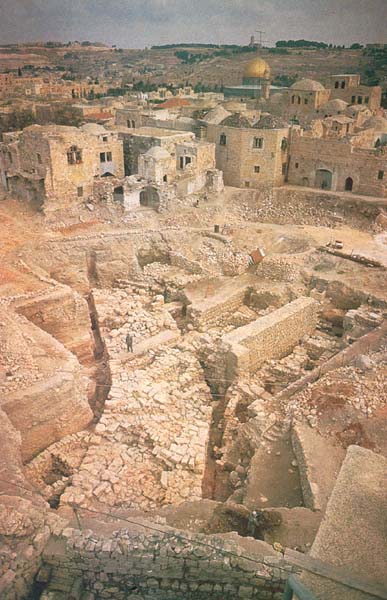
Israel Antiquities Authority, Photo by Nahman Avigad
King Hezekiah Prepares to Battle the Sennacherib, 701 BCE
Isaiah 22:10
[Hezekiah] counted the houses of Jerusalem and tore them down to strengthen the wall.
The Assyrian conquest of the Northern Kingdom of Israel led refugees to flee to Jerusalem and build homes there. King Hezekiah of Judah, in preparation for the coming of the Assyrians, fortified the wall of Jerusalem, building the Broad Wall around the entire city. The Broad Wall was unearthed in the 1970s by Israeli archaeologist Nahman Avigad.
The Assyrian conquest of the Northern Kingdom
of Israel led refugees to flee to Jerusalem and build homes on the outskirts of
the city. Along with building the tunnel
to divert the water, King Hezekiah of Judah prepared for the coming Assyrians
by fortifying the wall of Jerusalem and building the Broad Wall to include and
protect the expanding city.
Isaiah recorded in verse 22:10:
[Hezekiah]
counted the houses of Jerusalem and tore them down to strengthen the wall. In the 1970s, the Broad Wall was unearthed by
Israeli archaeologist Nahman Avigad. A section can be viewed today in the
Jewish Quarter of the Old City.
City of David Megalim Institute, Courtesy of George Blumenthal and the Gol Family
The Broad Wall of
King Hezekiah
2 Chronicles 32:5
He (Hezekiah) acted with vigor, rebuilding the whole breached wall, raising towers on it, and building another wall outside it. He fortified the Millo of the City of David, and made a great quantity of arms and shields.
2 Chronicles 32:5 He
(Hezekiah) acted with vigor, rebuilding the whole breached wall, raising towers
on it, and building another wall outside it. He fortified the Millo of the City
of David and made a great number of arms and shields.
Watch the video by the City of David Megalim Institute
expounding on the construction of the Broad Wall, courtesy of George Blumenthal
and the Gol Family
King Sennacherib of Assyria Attacks the City of Lachish, 701 BCE
2 Chronicles 32:9
Later, as Sennacherib king of Assyria and all his forces besieged Lachish, he sent his servants to Jerusalem with a message for King Hezekiah of Judah and all the people of Judah who were in Jerusalem.
Inscription from Sennacherib’s Palace at Nineveh
“Sennacherib, king of the universe, king of Assyria, seated upon a sedan chair, the spoils of Lachish passed before him.”
The central battle in Sennacherib’s campaign
against Judah was at Lachish in 701 BCE.
Lachish was an important fortress city, located 25 miles southwest of
Jerusalem.
Amazingly, Sennacherib
recreated in great detail scenes from the merciless battle on reliefs that
adorned the walls of his “Palace without Rival” in Nineveh. The Lachish Reliefs are currently on display
in the British Museum in London.
Part of the inscription from Sennacherib’s
Palace at Nineveh reads:
“Sennacherib,
king of the universe, king of Assyria, seated upon a sedan chair, the spoils of
Lachish passed before him.”
2 Chronicles 32:9 Later, as
Sennacherib king of Assyria and all his forces besieged Lachish, he sent his
servants to Jerusalem with a message for King Hezekiah of Judah and all the
people of Judah who were in Jerusalem.
The British Museum, London
Photo by Ardon Bar-Hama
Judeans from Lachish
Are Exiled to Assyria
In this panel of the Lachish Reliefs, Judean prisoners are depicted taking their families, goods, and animals with them into exile.
Lachish Relief, The British Museum, London,
Photo by Ardon Bar-Hama
The Lachish Reliefs Depict the Battle of Lachish and the Deportation of Israelites in 701 BCE
City of David Megalim Institute, Courtesy of George Blumenthal and the Gol Family
Learn more about the Battle of Lachish in this Megallim Institute video, courtesy of George Blumenthal and the Gol Family.
Recreation of Lachish Reliefs in Sennacherib’s Palace in Nineveh
Institute for the Visualization of History, Courtesy of George Blumenthal
This video, created by the Institute for the Visualization of History courtesy of George Blumenthal, recreates Sannecherib’s palace in Nineveh, envisioning what it was like to walk through the palace to the Lachish Battle Room.
King Sennacherib at Lachish sends Rabshakeh to Jerusalem, c. 701 BCE
Isaiah 36:2-16
F rom Lachish, the king of Assyria sent the Rabshakeh, with a large force, to King Hezekiah in Jerusalem.
And the Rabshakeh stood and called out in a loud voice in Judean: “Hear the words of the Great King, the king of Assyria! ...
Don’t listen to Hezekiah. For thus said the king of Assyria: Make your peace with me and come out to me, so that you may all eat from your vines and your fig trees and drink water from your cisterns..."
King Sennacherib at Lachish sends Rabshakeh, a Jewish deserter who knew Hebrew,
to Jerusalem in 701 BCE, to start a psychological intimidation campaign,
mocking the Judeans’ trust in their G-d and king.
Isaiah 36:2-16 From
Lachish, the king of Assyria sent Rabshakeh, with a large force, to King
Hezekiah in Jerusalem. And
Rabshakeh stood and called out in a loud voice in Judean: “Hear the words of
the Great King, the king of Assyria! ... Don’t
listen to Hezekiah. For thus said the king of Assyria: Make your peace with me
and come out to me, so that you may all eat from your vines and your fig trees
and drink water from your cisterns..."
Sling Stones from the Battle of Lachish
Israel Antiquities Authority / Israel Museum, Photo by Neta Dror
King Hezekiah and Sennacherib
Isaiah 36:6
You are relying on Egypt, that splintered reed of a staff, which enters and punctures the palm of anyone who leans on it. That’s what Pharaoh king of Egypt is like to all who rely on him.
Sennacherib's Prism
He (Hezekiah) called upon the kings of Egypt. The bowmen, the chariots and the calvary of the King of Ethiopia... I fought with them and inflicted a defeat upon them... I personally captured alive the charioteers of the King of Ethiopia.
 View Verse in
View Verse in the Great Isaiah scroll
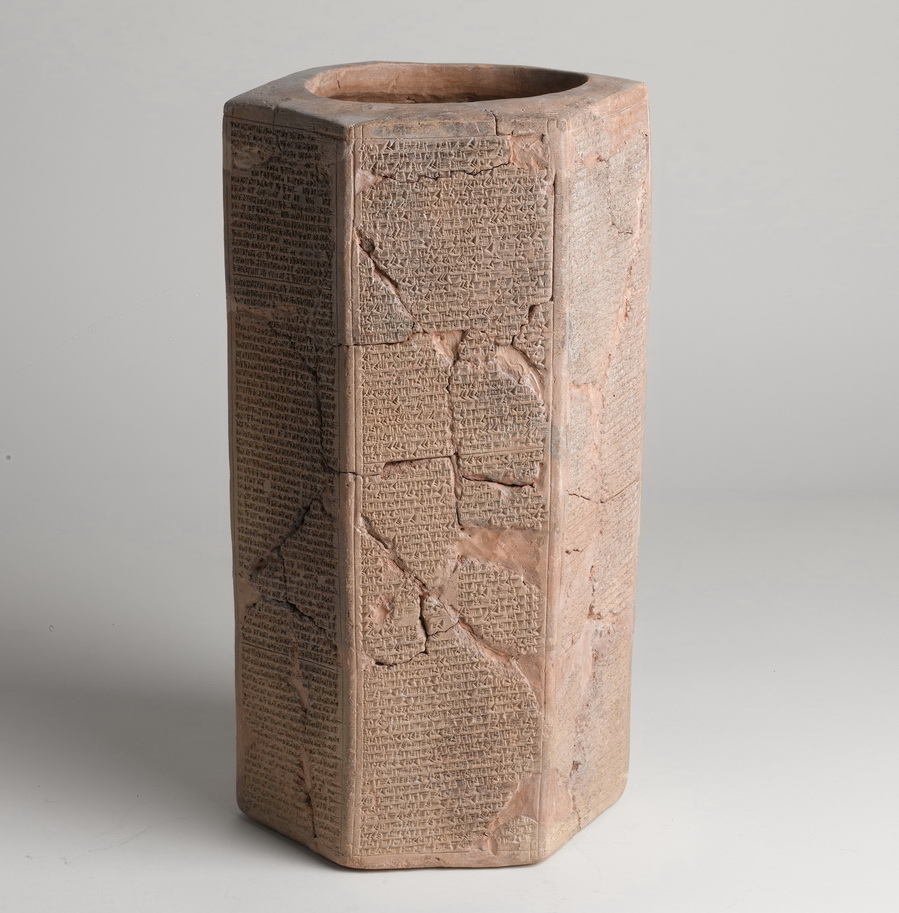
Israel Antiquities Authority / Israel Museum
Photo by Ardon Bar-Hama
Sennacherib used different ways to chronicle
his war campaigns. The final versions were three prisms made of red baked clay
and hexagonal in shape inscribed in Akkadian script.
In the picture is the Jerusalem Prism, which
was dedicated to his campaigns against the Kingdom of Israel and the Kingdom of
Judah.
One of the sections reads as follows: He
(Hezekiah) called upon the kings of Egypt. The bowmen, the chariots, and the
cavalry of the King of Ethiopia... I
fought with them and inflicted a defeat upon them... I personally captured
alive the charioteers of the King of Ethiopia.
This inscription confirms Isaiah’s account in
36:6 of Rabshake’s intimidating speech during the besiegement:
You are
relying on Egypt, that splintered reed of a staff, which enters and punctures
the palm of anyone who leans on it. That’s what Pharaoh king of Egypt is like
to all who rely on him.
Pharaoh of Egypt
Taharqa (Tirhakah)
2 Kings 19:8-9
The Rabshakeh, meanwhile, heard that the king had left Lachish; he turned back and found the king of Assyria attacking Libnah. But the king of Assyria learned that King Tirhakah of Nubia had come out to fight him
The Bible records Sennacherib’s encounter with
Egyptian Pharaoh Tirhakah in 2 Kings 19:9:
“But when
he (Sennacharib) heard that it is said about King Tirhakah, the King of Cush, that
he has come out to fight him…”
Tirhakah ruled over Egypt and the Kingdom of Cush in
Nubia, also known as Ethiopia, what is now Sudan and southern Egypt.
Kerma Museum, Sudan
King Sennacherib Withdraws from Jerusalem
2 Kings 19:35-36
That night an angel of the L-RD went out and struck down one hundred and eighty-five thousand in the Assyrian camp, and the following morning they were all dead corpses. So King Sennacherib of Assyria broke camp and retreated, and stayed in Nineveh.

As Sennacharib’s army reached Jerusalem,
Hezekiah turned to G-d in prayer. The Prophet Isaiah returns with G-d's
response.
Isaiah 37:33-35 Therefore,
thus says the L-RD concerning the king of Assyria: He shall not come unto this
city, nor shoot an arrow there, neither shall he come before it with shield,
nor cast a mound against it. By the way that he came, by the same shall he
return, and he shall not come unto this city, saith the L-RD. For I will defend
this city to save it, for My own sake, and for the sake of David, my servant.'
In a strange turn of events, the Assyrian camp
was hit by a divine plague.
2 Kings 19:35-36 That
night an angel of the L-RD went out and struck down one hundred and eighty-five
thousand in the Assyrian camp, and the following morning they were all dead
corpses. So, King Sennacherib of Assyria
broke camp and retreated, and stayed in Nineveh.
Sennacherib’s Palace Relief, The British Museum, London
Photo by Ardon Bar-Hama
The Death of Sennacherib: Esarhaddon Becomes King of Assyria, 681 BCE
Isaiah 37:38
While he [Sennacherib] was worshiping in the temple of his god Nisroch, he was struck down with the sword by his sons Adrammelech and Sarezer. They fled to the land of Ararat, and his son Esarhaddon succeeded him as king.
Babylonian Chronicle I
“On the twentieth day of the month Tebet, Sennacherib, king of Assyria, was killed by his son in a rebellion. On the twenty-eighth day of the month Adar Esarhaddon, his son, ascended the throne in Assyria.”
The end for Sennacherib would come at the hands of his sons. Isaiah writes in verse 37:38:
While he [Sennacherib] was worshiping in the temple
of his god Nisroch, he was struck down with the sword by his sons Adrammelech
and Sarezer. They fled to the land of Ararat, and his son Esarhaddon succeeded
him as king.
This
is confirmed in the Babylonian Chronicle, which reads: “On
the twentieth day of the month Tebet, Sennacherib, king of Assyria, was killed
by his son in a rebellion. On the twenty-eighth day of the month
Adar Esarhaddon, his son, ascended the throne in Assyria.”

Victory Stele of Esarhaddon, Pergamon Museum
Photo by Ardon Bar-Hama
The Tomb of Shebna, the Royal Steward
Isaiah 22:15-16
Thus says the L-RD G-D of hosts, "Come, go to this steward,
To Shebna, who is in charge of the royal household…
You have hewn a tomb for yourself here,
You who hew a tomb on the height,
You who carve a resting place for yourself in the rock?"
In this picture is the Tomb marker presumed to
belong to Shebna, the Royal Steward.
In Isaiah 22:15-16, the royal steward Shebna,
appointed by King Hezekiah, is admonished for building himself too grandiose a
tomb.
Thus
says the L-rd G-D of hosts, "Come, go to this steward, To
Shebna, who is in charge of the royal household…You
have hewn a tomb for yourself here, You
who hew a tomb on the height,You who
carve a resting place for yourself in the rock?"
The British Museum, London, Photo by Ardon Bar-Hama
Visualizing Isaiah: The Book of Isaiah Envisioned through Archaeology from the Israel Museum
Archaeology has played a pivotal role in bringing the Book of Isaiah to life. Not only through the discovery of the ancient Great Isaiah Scroll in Qumran, but also through countless artifacts that are connected to its narrative. Click on the link below to see the Book of Isaiah Envisioned through Archaeology from the Israel Museum.
created with
WordPress Website Builder .